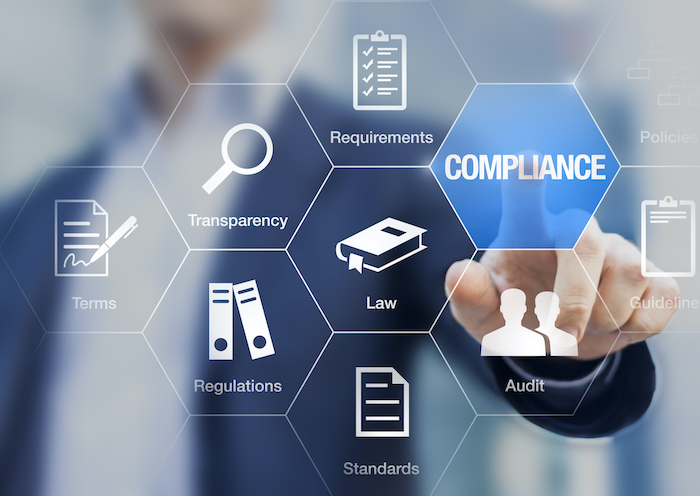In today’s increasingly digital and AI-powered world, the role of Chief Information Officers (CIOs) is expanding beyond traditional IT management. CIOs now have a critical responsibility to ensure digital accessibility. They need to make technology inclusive for all individuals, including those with disabilities.
From WCAG guidelines to feature integration, CIOs are primarily responsible for making their own and clients’ digital presence accessible. With major legislation reshaping the digital landscape in the US, Europe, and beyond, CIOs are forced to focus their sights on accessibility to bridge the digital divide.
This article will take a closer look at the role of CIOs in ensuring digital accessibility. We will also take a closer look at the impact and challenges they have to face, along with some crucial tips CIOs must consider.
Embracing Inclusive Design: Empowering the Marginalized
Inclusive design, often termed universal design, lies at the heart of digital accessibility. As technology permeates every facet of our lives, CIOs are turning towards Enterprise Architects to train developers to embrace this transformative approach.
The primary emphasis is on creating technology and digital experiences that are accessible to all individuals, irrespective of their abilities or disabilities. WCAG 2.1 guidelines are at the forefront of this emphasis.
This endeavor necessitates a paradigm shift in the way technology is conceived and developed. CIOs are highlighting IT jobs that can empower their teams to design with inclusivity as the foundation.
Emphatic Thinking & Accessibility
Today’s CIOs need to be more forward-thinking. They need to recognize that inclusive design goes beyond merely adhering to accessibility guidelines. Instead, it involves:
- Empathetic thinking,
- An appreciation of diversity, and
- The ability to anticipate and address the needs of a diverse user base.
By adopting this human-centered approach, CIOs can build technology that celebrates the richness of human diversity and ensures that no one is excluded from the digital landscape.
Inclusive Design
Inclusive design demands meticulous attention to detail. It also involves a comprehensive understanding of the diverse challenges faced by individuals with disabilities. These challenges may include:
- Visual impairments,
- Motor limitations,
- Hearing loss,
- Cognitive differences, and more.
As a visionary CIO, you must collaborate with cross-functional teams for accessible results. This may include designers, developers, and user experience experts. The goal is to create products and services that are universally accessible.
By championing inclusive design, CIOs unlock the potential to transform lives. They empower them to access education, job opportunities, healthcare services, and social interactions that were once out of reach. For this, CIOs adopt the role of an architect and are essentially crafting enriching digital experiences.
Accessibility Standards: Navigating the Regulatory Landscape
In a world that is increasingly shaped by technology, governments worldwide are recognizing the importance of digital accessibility. Consequently, legislative frameworks are being established to enforce accessibility standards. They hold organizations accountable for providing inclusive digital experiences.
Americans With Disabilities Act (ADA)
One such landmark legislation in the United States is the Americans with Disabilities Act (ADA). Enacted in 1990, it protects the rights of individuals with disabilities. The ADA has expanded its scope to encompass digital spaces, making it incumbent upon organizations to ensure their websites and digital services are accessible to all users.
Failure to comply with ADA guidelines has resulted in a surge of lawsuits. CIOs must safeguard their organizations from legal challenges by prioritizing digital accessibility.
European Accessibility Act (EAA)
In Europe, the European Accessibility Act (EAA) is poised to come into force in 2025. It is building upon the EU Web Accessibility Directive. The EAA aims to extend accessibility regulations to the private sector, aligning it with the public sector that has already been bound by accessibility requirements since September 2020.
CIOs in European organizations must proactively prepare to meet the forthcoming regulatory demands to ensure their digital assets are inclusive and compliant. Complying with accessibility standards entails:
- Thorough audits,
- Rigorous testing, and
- Iterative improvements to digital assets.
CIOs must work in close proximity with legal and compliance teams to interpret and implement the intricacies of accessibility guidelines. A proactive approach to accessibility is necessary for this.
The Impact & Challenges of Accessible Technology
Accessible technology has a profound impact on individuals with disabilities. It empowers them to access information, engage with digital content, and participate more fully in the digital society. Likewise, adaptive devices enable individuals with motor disabilities to interact with technology effortlessly.
However, implementing digital accessibility is not without its challenges. CIOs may encounter resistance from stakeholders who view accessibility measures as costly and time-consuming. However, it is essential to reframe accessibility as a strategic investment rather than a burdensome obligation.
CIOs must advocate for the long-term benefits of inclusivity, including expanded market reach, improved user experience, and enhanced brand reputation. Additional challenges CIOs are likely to face include:
- Cost & Resource Constraints: Implementing accessibility features and conducting regular audits require financial investment and dedicated personnel. However, CIOs can demonstrate the return on investment by highlighting the potential for increased revenue and customer loyalty resulting from an inclusive approach.
- Legacy Systems & Technical Debt: Organizations with legacy systems may struggle to retrofit accessibility features seamlessly. Outdated technology and technical debt can pose barriers to implementing modern accessibility standards.
- Ensuring Ongoing Compliance: Accessibility is an ongoing commitment, and CIOs must ensure that accessibility standards are continuously met as digital assets evolve. Changes in technology, content, or user interfaces may inadvertently introduce barriers to accessibility.
Practical Tips for CIOs
Based on the findings above, it is crucial that CIOs follow some practical tips to ensure accessibility. These include:
- Emphasizing Education: Foster a culture of awareness and education about digital accessibility among the entire workforce. Regular training sessions can help employees understand the importance of inclusive design and accessibility best practices.
- Collaborating Across Departments: Promote cross-functional collaboration between IT, design, marketing, and customer support teams to ensure accessibility considerations are integrated into all aspects of the organization’s digital presence.
- Engaging with the Disabled Community: Seek input from individuals with disabilities through user testing and focus groups. Their lived experiences can provide invaluable insights that inform better design decisions.
- Conduct Regular Audits: Implement regular accessibility audits of digital assets to identify areas that need improvement and to monitor ongoing compliance with accessibility standards.
- Prioritize Accessibility in Procurement: When procuring new technology solutions or digital services, make accessibility a non-negotiable criterion. CIOs must choose vendors and partners committed to inclusive design and accessibility.
Conclusion: A Unified Vision for an Inclusive Digital Future
As technology forges ahead, the role of CIOs becomes ever more consequential. Beyond steering the technical aspects of an organization, CIOs are enablers of empowerment, architects of inclusivity, and champions of accessible technology.
By embracing inclusive design and adhering to accessibility standards, CIOs create a virtuous cycle of progress—a world where technology opens doors to everyone, transcending the boundaries of abilities and disabilities.
CIOs who navigate the challenges of digital accessibility will lead their organizations toward an inclusive future. This is a future where technology is not just an instrument of innovation. It is also an instrument of human connection, understanding, and empowerment. This vision, driven by the tenets of empathy and collaboration, unites CIOs worldwide in the quest for a digitally inclusive tomorrow.




0 Comments